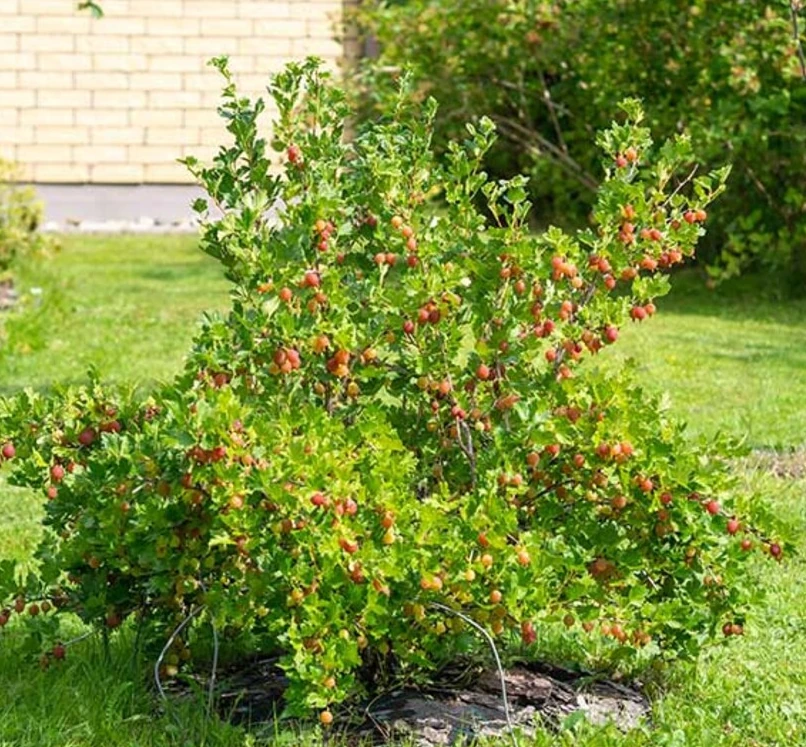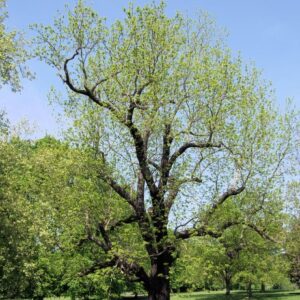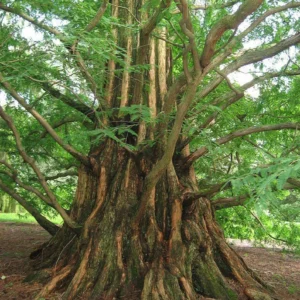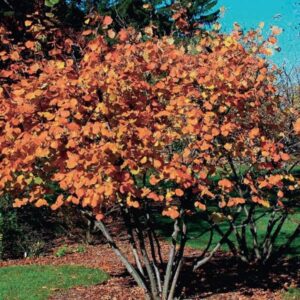Description
Gooseberry Tree – 1 Yr Old Seedling
Overview
The Gooseberry Tree (Ribes uva-crispa) is a compact, fruit-bearing deciduous shrub prized for its tart, juicy berries. Perfect for small gardens, this hardy plant adapts to various climates and soil types, offering a reliable harvest of vitamin-rich fruits that can be enjoyed fresh, baked, or preserved. Gooseberries also serve as a wonderful addition to edible landscapes or natural hedgerows, attracting pollinators and wildlife alike.
Gooseberry Tree Native Range
Gooseberry is native to Europe and parts of Asia but is widely cultivated in North America for its edible fruit and ornamental qualities.
Growth and Form
- Height: Reaches 3–5 feet at maturity.
- Spread: Spreads 3–6 feet, forming a dense, rounded shape.
- Growth Rate: Moderate, producing fruit within 2–3 years.
- Foliage: Small, lobed green leaves with a textured appearance.
- Flowers: Small, pale-green to yellow blooms in spring.
- Fruit: Round berries ranging from green to red, depending on the variety.
Ecological Benefits
- Wildlife Habitat: Flowers attract bees and other pollinators, while fruits feed birds and small mammals.
- Pollinator Support: Spring blooms are an early nectar source for pollinators.
- Edible Landscaping: Gooseberries integrate beautifully into gardens with dual-purpose aesthetics and food production.
Gooseberry Tree Hardiness and Climate Tolerance
- Hardiness Zones: 3–8, thriving in cool temperate regions.
- Cold Tolerance: Tolerates harsh winters and frost.
- Heat Tolerance: Performs best in cooler climates but can tolerate partial shade in warmer regions.
- Soil Preferences: Prefers well-drained, slightly acidic to neutral soils but adapts to various types.
Gooseberry Tree Planting and Care
- Planting Location: Choose a site with full sun to partial shade and good air circulation.
- Watering: Regular watering is needed, especially during dry spells.
- Fertilization: Use a balanced fertilizer in early spring to promote healthy growth and fruit production.
- Pruning: Prune annually to remove deadwood and improve airflow, reducing the risk of disease.
Uses
- Culinary: Gooseberries are ideal for jams, pies, sauces, and fresh snacking.
- Landscaping: Suitable for hedgerows, mixed borders, or edible garden designs.
- Wildlife Support: Fruits and flowers provide food and habitat for pollinators and small animals.
Potential Problems
- Diseases: Susceptible to powdery mildew and anthracnose; ensure proper spacing and prune to increase airflow.
- Pests: Watch for aphids, sawfly larvae, and scale insects.
- Thorns: Sharp thorns on stems require care during harvesting and pruning.






Reviews
There are no reviews yet.